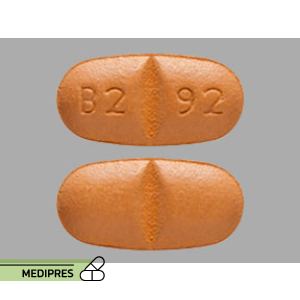
Olanzapine Orally Disintegrating Tablets
23 June, 2023
Oxymorphone (Injection)
23 June, 2023Oxcarbazepine Suspension
Category: O
Description
Generic name:
Oxcarbazepine
Drug class:
Dibenzazepine anticonvulsant; antiepileptic
Dosage form:
Oral suspension (e.g., 300 mg/5 mL)
Root of administration:
Oral
Dose:
- Adults: initial 300 mg twice daily; increase by 300 mg every 3 days to 1200–2400 mg/day in divided doses
- Children (4–16 years): 8–10 mg/kg/day initial; titrate by 5 mg/kg every week up to ~30 mg/kg/day
- Geriatric: start low; adjust based on renal function and tolerability
- Renal impairment: dose reduction recommended; monitor renal function
Mechanism of action:
Prodrug converted to 10-monohydroxy metabolite; blocks voltage-gated sodium channels, stabilizes hyperexcitable neuronal membranes, inhibits repetitive neuronal firing, and reduces synaptic impulse propagation.
Drug usage cases:
- Partial seizures (monotherapy and adjunctive therapy) in adults and children ≥2 years
- Trigeminal neuralgia (off-label)
- Bipolar disorder (adjunctive/off-label)
- Generalized tonic-clonic seizures (off-label)
- Neuropathic pain (off-label)
Drug contra indications:
- Hypersensitivity to oxcarbazepine, eslicarbazepine, or related compounds
- History of severe cutaneous adverse reactions (e.g., Stevens-Johnson syndrome, toxic epidermal necrolysis)
- Presence of HLA-B*1502 allele (increased risk of SJS/TEN) unless benefits outweigh risks
Side effects:
- CNS: dizziness, somnolence, headache, ataxia, nystagmus, tremor, fatigue
- Gastrointestinal: nausea, vomiting, dyspepsia
- Electrolyte: hyponatremia, SIADH
- Dermatologic: rash, pruritus, Stevens-Johnson syndrome, toxic epidermal necrolysis
- Hematologic: leukopenia, neutropenia, agranulocytosis, thrombocytopenia
- Hepatic: elevated transaminases, hepatic dysfunction
- Psychiatric: agitation, behavioral changes, depression, suicidal ideation
- Endocrine: hypothyroidism (rare)
- Others: weight gain, peripheral edema, xerostomia
Warnings:
- Risk of serious dermatologic reactions; screen for HLA-B*1502 in at-risk populations
- Hyponatremia and SIADH; monitor serum sodium regularly
- Suicidal thoughts and behaviors; monitor mood changes
- CNS depression; caution with other sedatives
- Blood dyscrasias; periodic blood counts recommended
- Hypersensitivity reactions; discontinue if severe rash or organ involvement
- Withdrawal seizures; taper gradually
Use during pregnancy or breastfeeding:
Pregnancy: Category C. May increase risk of congenital malformations (e.g., neural tube defects). Use only if benefits justify risks. Monitor maternal folate levels.
Breastfeeding: Excreted in breast milk; potential for adverse effects in neonates. Use caution; monitor infant for sedation and feeding difficulties.



